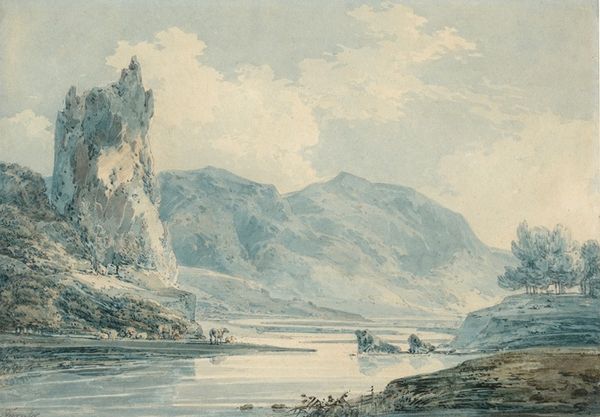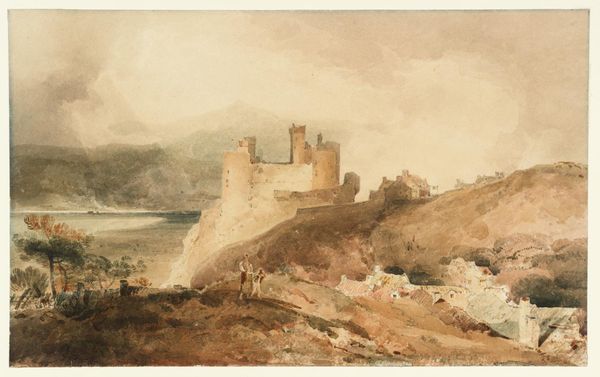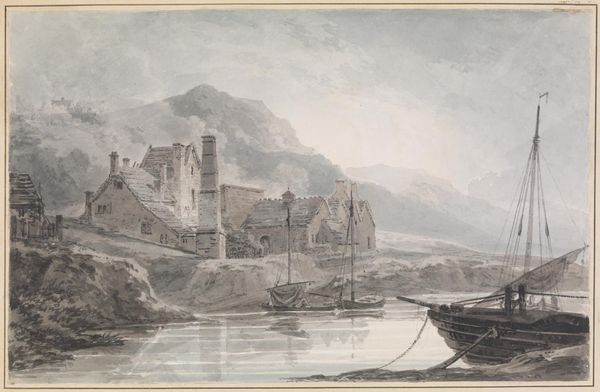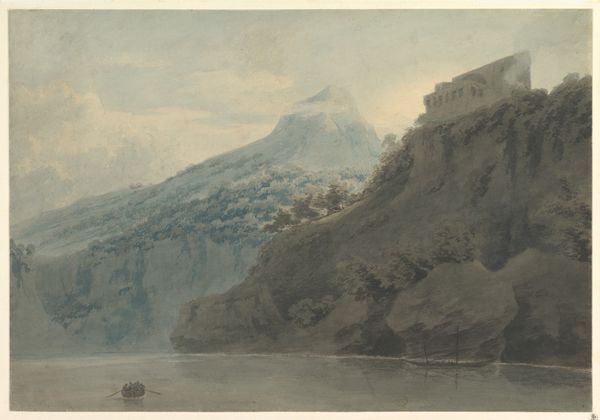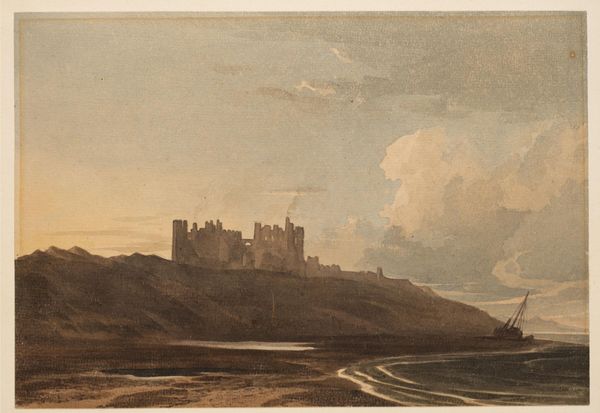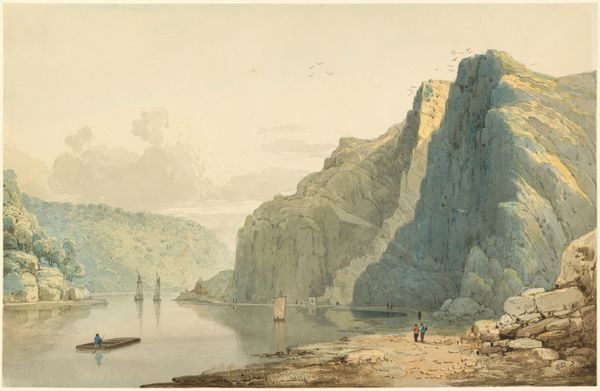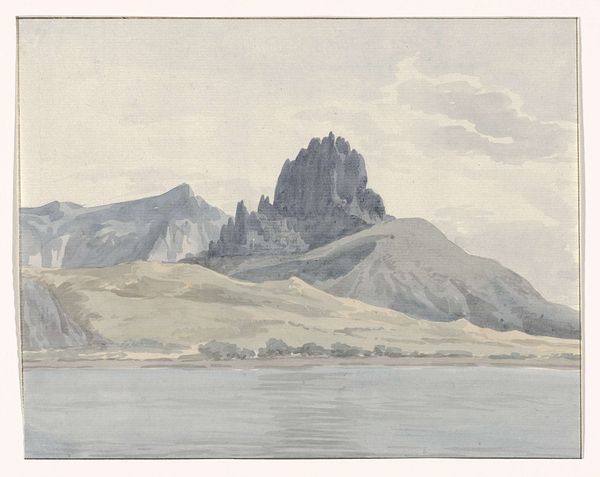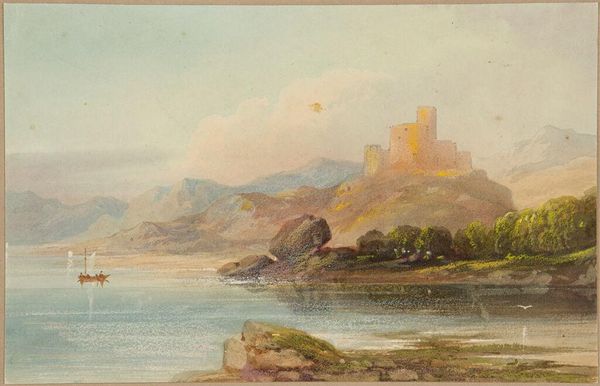
Lindisfarne Castle, Holy Island, Northumberland 1796 - 1797
0:00
0:00
drawing, print, plein-air, watercolor
#
drawing
#
ink painting
# print
#
plein-air
#
landscape
#
oil painting
#
watercolor
#
coloured pencil
#
romanticism
#
cityscape
#
watercolour illustration
#
watercolor
Dimensions: Sheet: 15 in. × 20 1/2 in. (38.1 × 52 cm)
Copyright: Public Domain
Editor: So here we have Thomas Girtin’s watercolor, “Lindisfarne Castle, Holy Island, Northumberland,” created between 1796 and 1797. There’s something really striking about the texture he achieves, especially on the rocky hill. What catches your eye when you look at this piece? Curator: For me, it's how Girtin handles the materials. Think about the availability and sourcing of watercolor pigments at that time. Where did Girtin obtain these pigments, and what does their origin tell us about the global trade networks of the late 18th century? Also, observe how he layers the washes to create a sense of depth and atmospheric perspective, particularly considering the plein-air approach, painting directly outside. Editor: That's interesting! I hadn't considered the materials themselves. So, the pigments… How might the limitations of those materials have affected his artistic choices? Curator: Precisely! Was it a conscious aesthetic decision to embrace a muted palette, or was he limited by what was available? Furthermore, the production of prints—an alleged medium in this case—served what societal purpose? How was labor organized in workshops to disseminate such images? Editor: I suppose it allowed wider access for people who couldn’t afford original art or travel to see the locations themselves. What do you think he wanted people to take away from the image? Curator: Well, given its potential status as a print, consider its role in shaping public perception of landscape and national identity. Was Girtin romanticizing the ruins for a specific audience, perhaps reflecting the anxieties and aspirations of a rapidly industrializing society? How do these images become commodities shaping cultural narratives? Editor: I never thought about how the *making* of the art influenced the meaning. Thank you! Curator: It highlights how economic structures are tied up in artistic interpretation! Looking at the social contexts is just as revealing as considering the aesthetic choices alone.
Comments
No comments
Be the first to comment and join the conversation on the ultimate creative platform.



